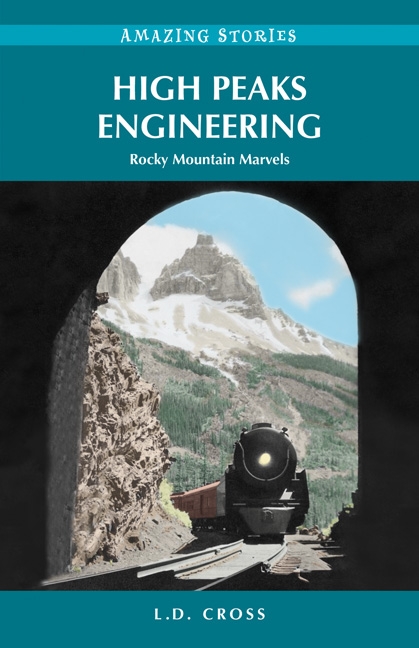| ________________
CM . . .
. Volume XXI Number 29 . . . . April 3, 2015
excerpt:
High Peaks Engineering discusses the construction of transportation routes, mainly railways, through the mountains between southwest Alberta and southeast British Columbia over one hundred and fifty years in the nineteenth and twentieth centuries. This was very hazardous work and required a great number of men and a great deal of money and material. The book has 11 chapters of varying lengths, as well as a prologue and epilogue which are both useful. It has an Index, suggestions for Further Reading and a Chronology. There are 14 functional black and white photographs spread throughout the book and two useful maps. A glossary would have been helpful to explain terms which are rarely used, such as “theodolites” and “Devils Clubs”. Occasionally, explanations are given in the text. (Telegraph is an example. Tele means far and graph means write in Greek.) Also, a picture or diagram of the oft-mentioned “snowshed” would have been welcome. The first project discussed is the construction of the CPR, a massive undertaking at any time, through the mountain ranges in western Canada, but particularly challenging in the 19th century when the tools available were primitive compared to those available today. The story of its construction and the many challenges the workers faced in dealing with the powerful rapids and rock wall canyons of the Fraser River is truly amazing. Another interesting project was the construction of the Kettle Valley Railway (KVR) which provided train service in southwestern BC between Castlegar, Hope and Spences Bridge. Built between 1910 and 1915, it was only 525 kilometres, but its construction required 43 bridges, 22 million board feet of lumber and 4,500 tonnes of steel. In addition, 13 tunnels and 16 snowsheds were required. However, the environment proved too hostile to maintain the railway, and it exists today only as a tourist attraction in a 16 mile section. As one would expect in endeavours of this nature, you meet some very interesting characters. One of these is Albert Bowman (A. B.) “Hell’s Bells” Rogers. His name may not make the reader sit up and take notice, but his description as a “short, scrawny 52 year-old with flaring whiskers, a foul mouth, and a fascination with immortality” certainly will. A most unusual man, Rogers was described by William Van Horne, the President of the CPR, as the “engineering saviour” of the railway. High Peaks Engineering could only be used for recreational reading. It is a very detailed and factual book. There are so many facts it is difficult to know if all of them are accurate. The great quantity of detail makes the book a slow and sometimes boring read. Some of the details could have been omitted without harming the book. L. D. Cross, the author of High Peaks Engineering has written a number of nonfiction books, including Flying On Instinct and Treasure Under The Tundra. In addition to writing, she has had a varied career including employment with Industry Canada as a Senior Policy Analyst. She is certainly qualified to write about engineering feats. Recommended. Thomas F. Chambers, an author and retired college teacher, lives in North Bay, ON.
To comment on this title or this review, send mail to cm@umanitoba.ca.
Copyright © the Manitoba Library Association. Reproduction for personal use is permitted only if this copyright notice is maintained. Any
other reproduction is prohibited without permission.
CM Home | Next Review | Table of Contents for This Issue - April 3, 2015 | Back Issues | Search | CM Archive | Profiles Archive |
